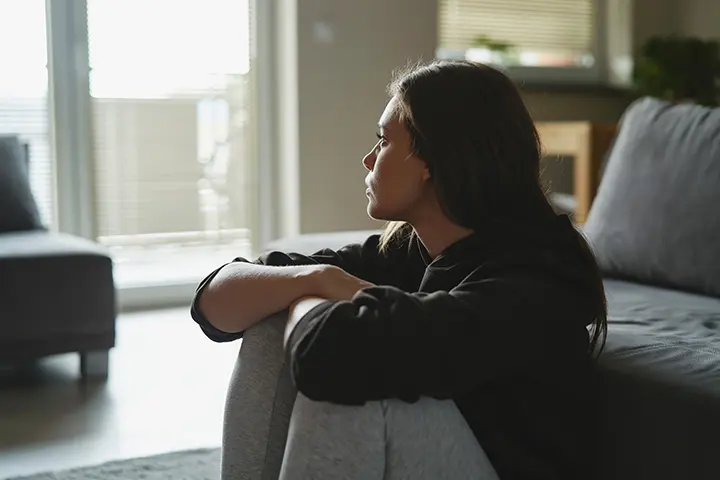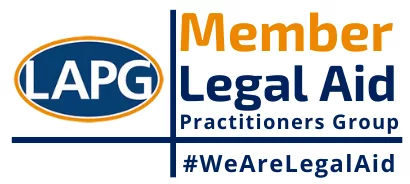What is Domestic Abuse?
Domestic abuse is an extensive and deeply damaging issue that affects individuals across all genders, backgrounds, and communities. Domestic abuse encompasses a wide range of behaviours that seek to control, harm, and degrade an individual.
The Domestic Abuse Act 2021 defines domestic abuse as:
- a single incident or a pattern of behaviour of one person towards another person;
- where the people involved are aged 16 or over;
- the people involved are personally connected to each other; and
- the behaviour is abuse.
Types of abusive behaviour defined within the act are explored below.

Contact us
If you, or any children, are being subjected to any of the forms of abuse detailed in this article and you wish to obtain legal advice to safeguard yourself or your children, please contact us. Goodman Ray have a specialist team of domestic abuse solicitors that focus on assisting those who have been affected by domestic abuse.
The Different Forms of Abusive Behaviour
Under the statutory definition, the behaviour will be considered abusive if it consists of any of the following:
1. Physical abuse
This includes any act intended to cause injury or trauma. Examples include but are not limited to strangulation, hitting, slapping and a misuse of medication.
2. Sexual abuse
Sexual abuse occurs when an individual does not consent or they feel pressured into consenting to a sexual act. Sexual abuse will have occurred in incidents of rape and sexual harassment but also include sexual teasing or indecent exposure. Physical signs may occur as a result such as bruising and sexually transmitted diseases.
3. Violent or threatening behaviour
Violent or threatening behaviour is intended to intimidate a person and instil fear. Acts can include verbal abuse such as shouting, making derogatory comments about appearance, disability, or identity and verbal threats.
4. Controlling or coercive behaviour
Controlling or coercive behaviour can be difficult to recognise, especially when considering a one off incident in isolation. To help in identifying these behaviours, some examples include but are not limited to isolating a person from their friends or family members, monitoring location and times, controlling what a person is wearing, controlling an aspect of their daily life and taking control of their finances.
With the rise of technology, abusers are also increasingly using digital platforms to harass or control a person. Monitoring a person’s phone and subjecting them to online trolling and harassment are all forms of controlling and coercive behaviour intended to cause harm.
5. Economic Abuse
Economic abuse restricts a person’s access to financial resources, affecting their ability to live independently. An individual may control access to spending, bank accounts, mortgages and running up debt in a person’s name.
6. Psychological, emotional or other abuse
Psychological and emotional abuse often consists of repeated behaviours which creates an abusive relationship. This type of abuse involves non-physical tactics to control or hurt a victim. Common examples include gaslighting or making someone question their reality and manipulating an individual into complying with demands.

No More Week 2025
Impacting one in three women and one in six men globally, domestic abuse and sexual violence have long been associated with a culture of silence. Those affected have often felt at risk of stigmatisation, and efforts to alter the status quo have been perceived as falling on deaf ears. Learn more about No More Week by reading our recently article by Sheeja Sukumaran.
Domestic Abuse Frequently Asked Questions
Signs can vary, but common indicators include unexplained injuries, withdrawal from friends or family, anxiety, low self-esteem, and changes in behaviour. Financial control, constant monitoring, or fear of a partner can also be red flags.
Yes. Domestic abuse can affect anyone regardless of gender, age, or background. The law protects all victims equally, and support is available for anyone experiencing abuse.
Victims may apply for protective court orders such as non-molestation orders or occupation orders. These can restrict the abuser’s contact and regulate who lives in the family home. Legal aid may also be available, subject to eligibility.
No. Abuse can take many forms, including emotional, psychological, sexual, economic, and coercive control. Non-physical abuse can be just as harmful and is recognised under the Domestic Abuse Act 2021.
Approach them with care and without judgement. Encourage them to speak to a professional, such as a solicitor or a domestic abuse charity. Do not confront the abuser. If someone is in immediate danger, call 999.
Get in touch with our specialist Domestic Abuse Solicitors London and Brighton
No one should ever be subjected to domestic abuse. At Goodman Ray, we have a specialist domestic abuse team of solicitors that focuses on assisting those who have been affected.
If you, or any children, are being subjected to any of the forms of abuse listed above and you wish to obtain legal advice to safeguard yourself or your children, please reach us by completing an enquiry form on our website, or contact us via the telephone on 020 7608 1227 email us at mail@goodmanray.com.
Contact us today
If you have any questions or wish to get legal advice on any of the topics raised above please feel free to contact us.
Call us on 020 7608 1227







